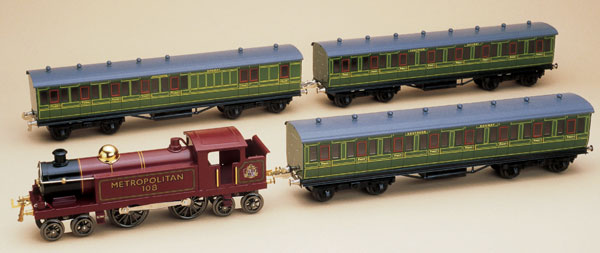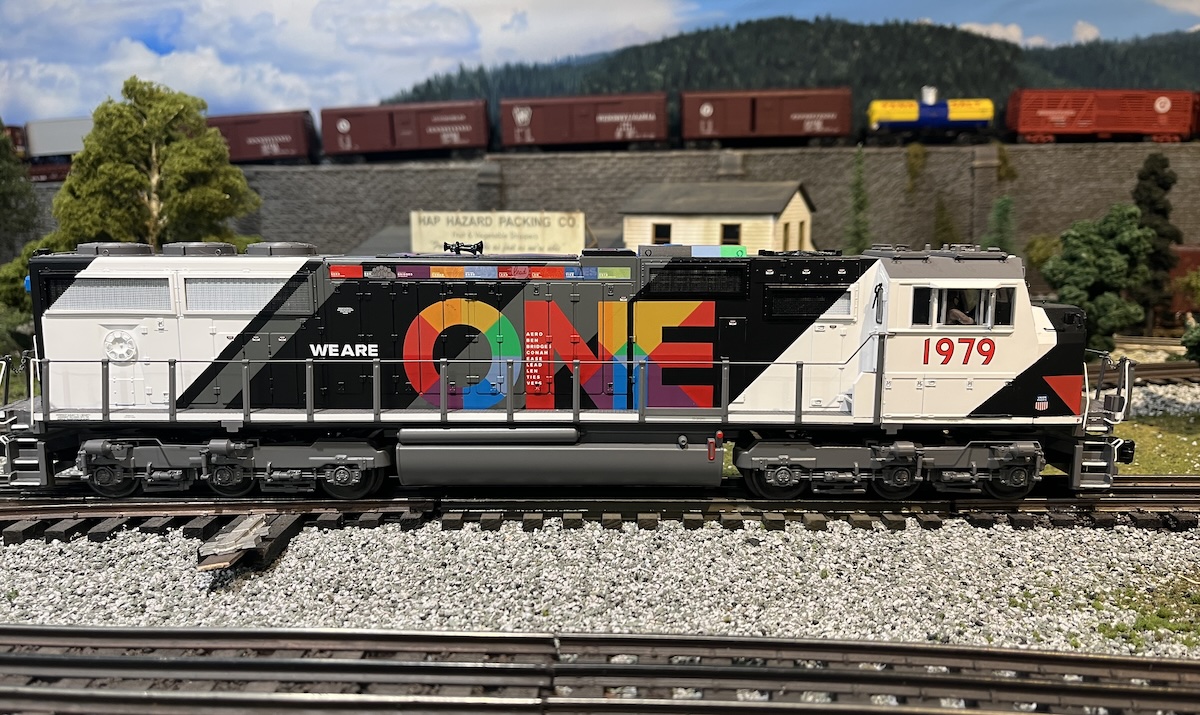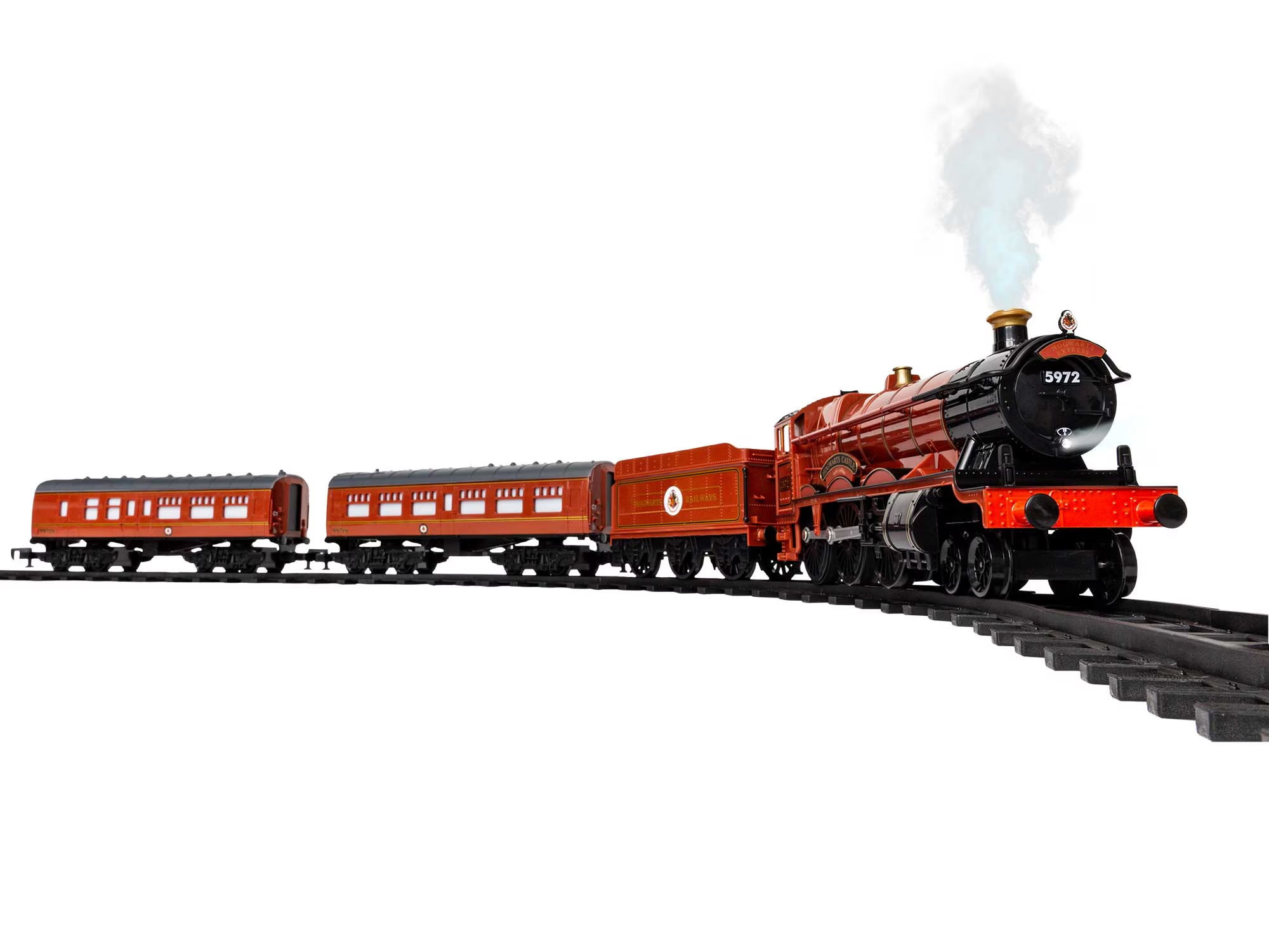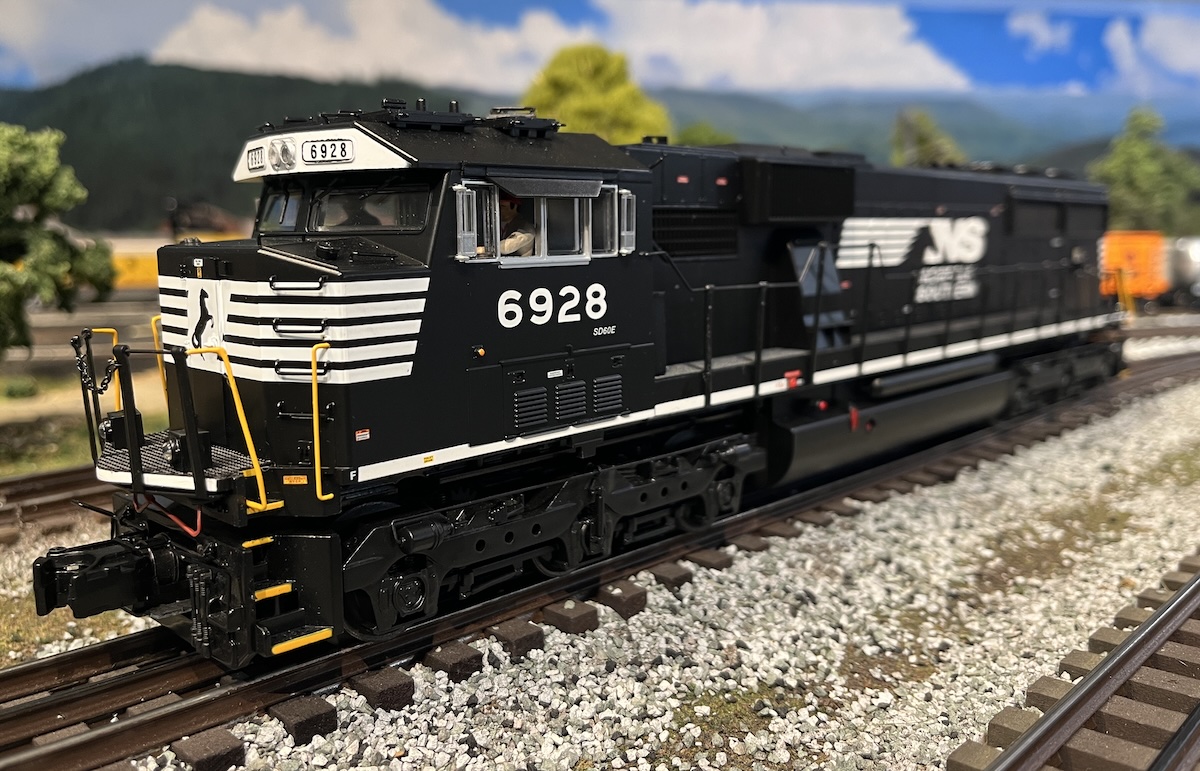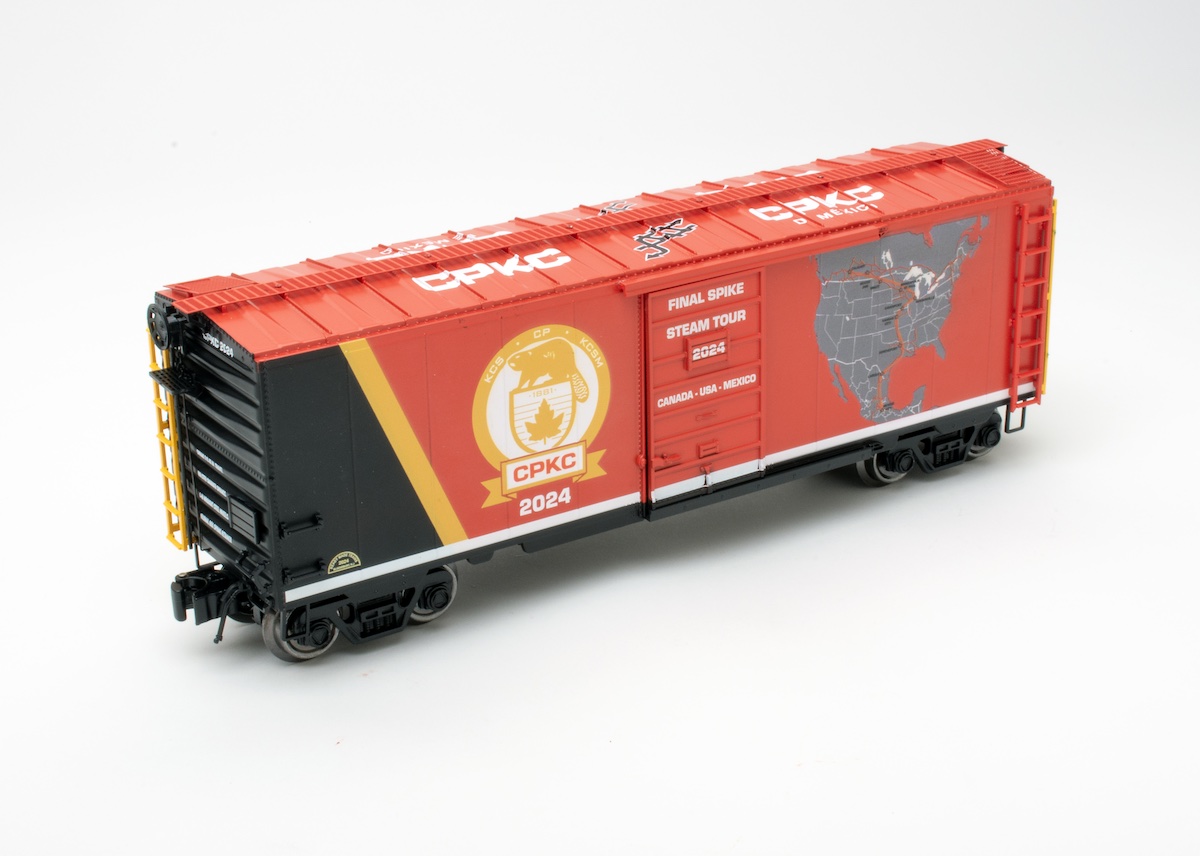Combine one cup American prewar tinplate, a tablespoon of modern reproduction, two cups of British Hornby trains, and a dash of Thomas the Tank engine (for personality). Put all the ingredients into an O-gauge mixing bowl; stir well and bake. When done, you have the Ace E/1.
Traditional design
The E/1’s design is based on a prewar British Hornby clockwork tank engine, which in turn was based on prototype 4-4-4 express steam engine made for England’s Metropolitan Railway.
The Ace 4-4-4 is 99 and 44/100 sheet metal. Joints and folds on the body and frame are quite tidy, and the pieces are joined by a series of tabs and slots. The motor and drive mechanism are neatly attached to a sheet-metal frame with nuts and bolts (metric, of course!). Overall construction is quite stout, and I wouldn’t be afraid to let a child handle the locomotive.
Our sample locomotive came in the livery of the Metropolitan Railway. This is now part of the London underground railway system, but at one time it was a common carrier. It opened in 1863 and hauled both freight and passenger traffic, terminating underground deep inside London. Although the firm argued that it was a mainline trunk railway, it was merged into the London Passenger Transport Board in 1933.
Details on the ACE locomotive are few – notably the polished steam dome, painted stack and whistle, and grab handles – but are very much in keeping with tinplate heritage. The maroon paint on our Metropolitan Railway sample – one of more than 15 roadnames available – is flawless, accented by gold striping, restrained graphics, and a metal Ace emblem at the rear of the cab. The drivers and wheels on the leading and trailing trucks are cleanly cast, and even the smaller spoked wheels are see-through castings. The entire effect, from the bumpers on each end to the European tinplate couplers, is classy with a capital C.
The Ace 4-4-4 can be purchased with three coaches, a combination of first class, third class, and baggage compartments available in more than a dozen European roadnames. The passenger cars we examined are decorated for Britain’s Southern Railway, a company formed in 1923 by consolidating a number of obsolete and overlapping railways in southern and western England.
While the locomotive relies on folded sheet metal construction for its form, the coaches lean heavily on well-done lithography. The coaches are 15 inches long, rather lanky for tinplate, but look appropriate behind the locomotive, which itself is sized fairly close to O scale (rather than smaller O-27). Each coach has a plastic insert behind the window openings, unexpected for tinplate. The coaches, which are not lighted, have four-wheel sheet-metal trucks with die-cast metal side frames.
The Ace 4-4-4 is a no-frills toy train. The locomotive has no sound system, smoke, or even a whistle. There is no headlight on the boiler, but there are bulbs in the lanterns on the ends of the front pilot that glow dimly, just as real lanterns would. The locomotive’s 24-volt motor picks up power from the center rail through a pair of spring-loaded sliding pickups, not unlike a prewar American Flyer design. Unique to us here in the United States is a rod and knob in the locomotive cab. Push the rod in for AC operation; out for DC three-rail operation.
On the track
Out of the box the locomotive gears are factory lubricated, but it took a few hours to break in the mechanism (not surprising given its traditional construction). We added some light oil to the drive rods, which helped. We recorded a slow speed of 5.6 scale mph and a high speed of 89.6 scale mph, quite respectable for a tinplate design. The locomotive weighs 2 pounds, 12 ounces.
Pulling power is not the locomotive’s strength. Drawbar pull is 8 ounces, which during operation is just enough to pull its three tinplate coaches. Slight grades and a heavy hand on the throttle can easily cause the locomotive’s drivers to spin. Actually, this made operation more fun. Keep in mind there are no traction tires or any equivalent of Magne-Traction. I tried the E/1 on a variety of American track and experienced no problems.
In what is probably close to an apples-and-oranges comparison, the Ace engine was a bit slower than the postwar Berkshire, our O gauge steam benchmark, and the Berk’s drawbar pull dwarfed this British classic. But that’s okay.
Stopping and starting are somewhat jerky affairs. Try as I might, it is tough to overcome the locomotive’s inertia without spinning its drivers. Stopping is abrupt, since the design of the drive mechanism prevents coasting. Nonetheless, once under way, the locomotive runs well, and the longer it runs, the smoother it becomes. Of note, the sealed windows of the passenger cars create a sound chamber as the train crosses track joints, doing an admirable if unintentional job of mimicking the clickety-clack of a real train on jointed track. Although the locomotive alone can handle O-31 and even O-27 curves, the coaches can’t.
The bumpers on the coaches extend outward just about as far as the coupler hooks, so on curves tighter than O-42 the bumpers on adjacent coaches bang into each other. If the bumpers are unscrewed and removed the coaches can negotiate O-31 curves.
The couplers are quaint and European tinplate in style, but if you’re all thumbs, they’re tougher to link together than even prewar Lionel latch couplers. Once coupled, however, there is virtually no chance of an unintended uncoupling. The couplers don’t mate with latch or tab-and-slot couplers, although with some ingenuity (and perhaps a few rubber bands) you can get the E/1 to pull American cars.
The locomotive’s “E-unit” is unlike anything most of us are used to. Like American toy trains, it cycles to neutral between directions. Unlike American toy trains, simply cutting the power momentarily to sequence the reverse unit doesn’t work. According to the instruction sheet, you must cross a threshold of 16 volts to actuate the locomotive’s auto reverse unit.
Both CTT staffer Bob Keller and I struggled with the reverse unit using an MTH Z-4000 transformer and a Lionel TrainMaster system in conventional mode.
During operation on my home layout, however, the balky reverse unit wasn’t a hindrance. The E/1, like other prewar-style locomotives, is designed for straight-ahead running, not yard work. There was never a need to cross the 16-volt threshold, so the locomotive operated as if it were locked in forward, which is just fine.
Thomas, Percy, and Henry aside, the E/1 is a charming character. Its classy looks draw attention whether on a display shelf or a layout, and its unpretentious nature draws a smile from even the most hardened scale modeler. Tea anyone?





